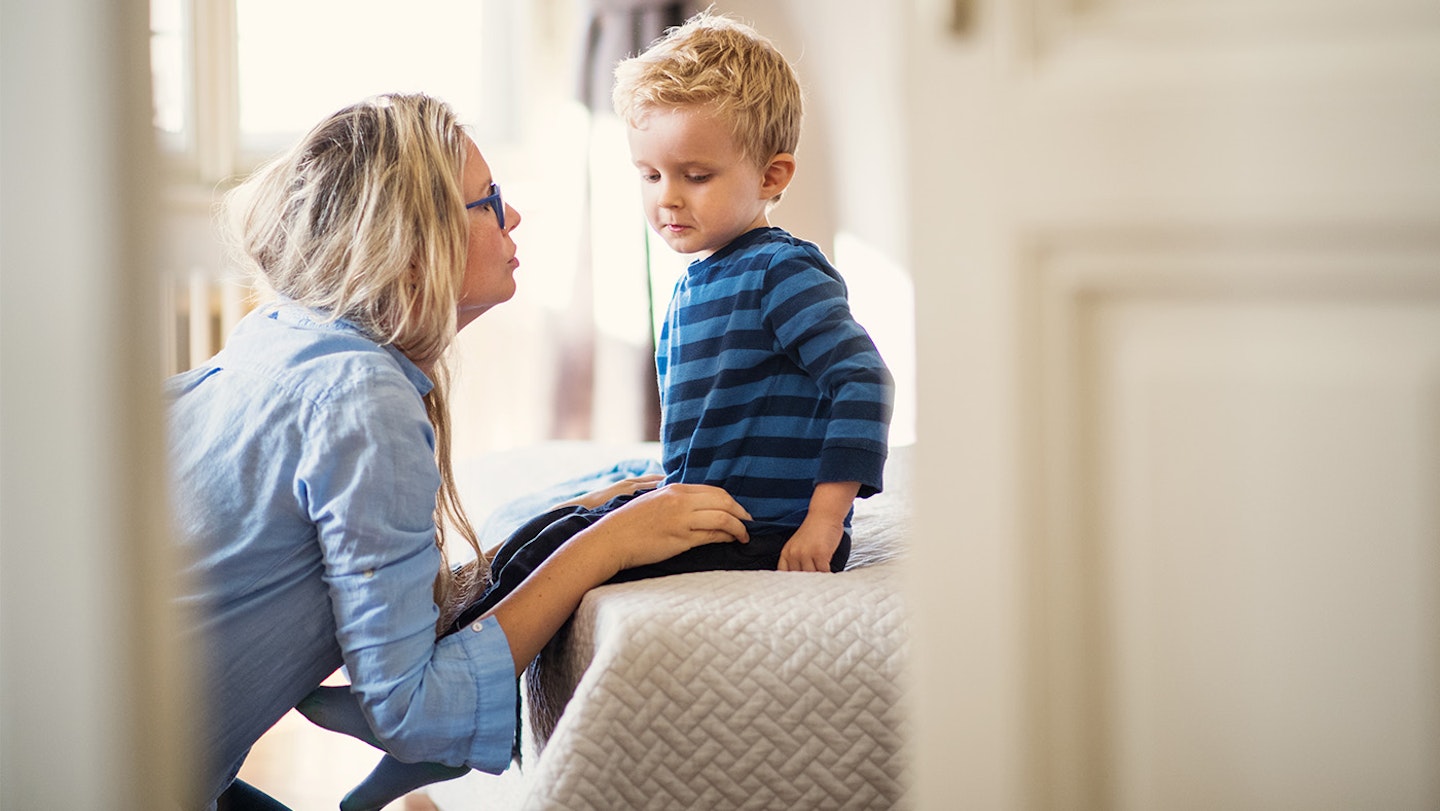There are lots of different decisions to make when you become a parent. How you wean your child or if you try sleep training, for example. One decision that might take you some time to decide, is what your parenting style will be. One style that many parents are exploring is gentle parenting.
What is gentle parenting?
The term 'gentle parenting' describes a way of parenting that is mindful in its approach and focuses on communication and mutual respect between parents and children, as well as a focus on child-led learning and independence.
Gentle parenting, or responsive parenting as I like to call it, focuses on listening to your children, teaching them to connect with their emotions, allowing them to understand that their consequences have actions without invoking 'punishments' and being firm but kind.
Contrary to popular belief, gentle parenting does not mean throwing the rule book for your children out the window or refusing to reinforce boundaries. In fact, boundaries are fundamental to gentle parenting. Children need boundaries and rules to feel safe and secure, they need to understand right from wrong and to learn that actions have consequences.
Gentle parenting may suddenly seem trendy but it's actually been practiced by parents for many decades. It's easy to judge gentle parenting for being a fad that encourages a lack of discipline, but in reality, it's a parenting style rooted in educational psychology.
Examples of gentle parenting
• Allowing your child to ride out their feelings and not trying to stop them from crying or having a toddler tantrum.
• Listening to your child when they are talking to you by stopping what you are doing, getting down on their level and making eye contact.
• Helping your child to problem solve and understand the way in which their body and brain is working: “You wanted to throw that vase because your brain was telling you it will feel good. Sometimes we need to move our bodies in that way but we have to carefully choose what we throw or how we use our bodies. Can you think of anything that would be better to throw and wouldn’t break or hurt someone?”
• Setting boundaries and reinforcing these firmly but kindly. It’s ok to have rules and boundaries within reason and where they make sense. Being firm while remaining kind and understanding is still within the realms of the gentle parent.
• Trying to understand the root cause of your child’s behaviour and finding an appropriate resolution.

What makes gentle parenting different from other methods?
Gentle parenting is all about connecting with your child on a deeper level - communicating with them to understand why something has happened and what the consequences, positive or negative might be. Whereas other methods may favour discipline by shouting or using a naughty step, gentle parenting understands that these punishments only serve to make children upset or confused.
We know that in order for children to learn from a mistake, the consequences must be directly linked to the action:
Scenario: Your child tips their cup of milk onto the floor in protest to something you have said.
Other parenting methods: Shout at the child and tell them they are naughty. Make them sit on the naughty step for 3 minutes to make them think about what they've done.
Gentle parenting: Parent responds by saying: "I understand that you're angry with me. It's ok to be angry but spilling your milk on purpose is not ok."
Parent offers a hug or reassuring presence while the child is working through their emotions. When the child is calm, the parent directly addresses the reason the child was angry and talks about the problem, coming to a joint decision or mutual understanding. They refer back to the spilt milk and ask the child to think about how the problem could be solved (the child cleans up the spilt milk).
Benefits of gentle parenting
Most parents think that gentle parenting means not setting rules or boundaries and letting your children 'run wild' but this isn't the case at all.
This way of parenting focuses on positive communication with your child - explaining things to them clearly and teaching them to identify their emotions so they can handle different situations. This creates children that are largely more independent, with better language and social skills, emotional regulation and higher levels of wellbeing.
Gentle parenting teaches both parents and children to understand the emotions at the route of problems or debates, leading to better conflict resolution skills and deeper emotional intelligence as children grow and mature.
Challenges of gentle parenting
The difficulty comes in putting it into practice! As parents, we are often short on time, in a rush or dealing with our own emotions around a situation - feeling angry, tired or frustrated for example. Gentle parenting involves you being really mindful about how and what you say to your child, so as to become a positive role model to them. That's not always easy when you're feeling touched out, fed up or tired at the end of a busy day or during a toddler tantrum!
It’s important to know that no parents are perfect. We are all learning and trying our best but losing your cool or shouting at your child when you didn’t mean to doesn’t mean that you’ve failed. Use the opportunity to think about what you could do differently next time. Apologise to your child - tell them that you know you didn’t handle the situation in the correct way and that you’re going to keep trying. Allowing our children to see us working through situations will help them too.

Techniques to try
Model kindness
Children learn through imitation and they will copy the way in which you speak and interact.
Name your feelings
This should be for both positive and negative feelings, and encourage your child to do the same. If they aren’t sure, you can name their feelings for them: “I see that you’re feeling…”
Take a step back
Don't be afraid to take a step back from a situation that you recognise may trigger your own feelings of anger. It’s ok to step out of the room to calm down and take a few breaths. Try to understand your own trigger points and mitigate them to make situations easier to deal with. I know, for example, that I find the hours before bedtime challenging if I’m uncomfortable at the end of a long day. Changing into my comfy clothes and tying back my hair makes me feel more in control of my feelings and emotions.
Involve your children in daily life skills and activities to encourage independence
This could include helping to prepare the meal, or providing them with their own cutlery and a cup to use independently at meal times. Cups like the Munchkin 360 will encourage independent drinking from an early age and will help to develop motor skills and coordination, as well as being better for dental development than those with a spout.
Rather than imposing your own decisions on your child, give them a choice to make: "Are you going to put on your hat or coat first?"
Don't forget
There is no ‘one size fits all’ approach to parenting. Each child, parent and family dynamic is different. Certain situations will require different responses and that’s ok. Gentle parenting doesn’t have to look like an Instagram-perfect version of a family, where everyone is happy all the time and children always do as you’d wish.
Try to let go of this idea of perfection and understand that parenting is a huge learning curve on which you’re making daily progress. Revel in the good times and, in the bad times, take a step back and know that you’ll do it differently tomorrow.
